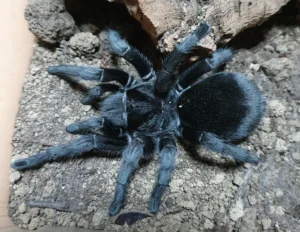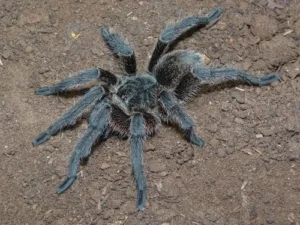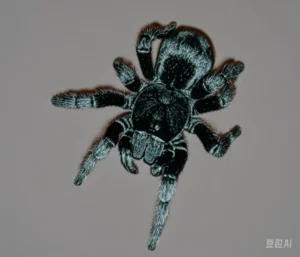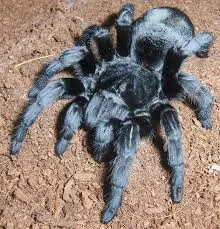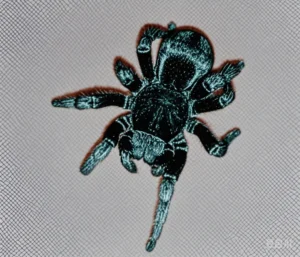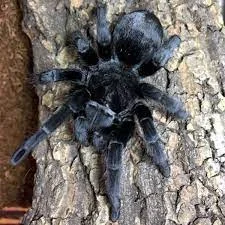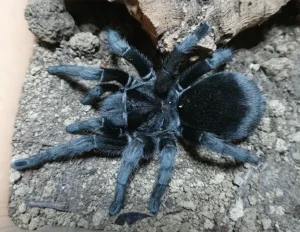Tarantula Health
Parasites and Pathogens Affecting Grammostola pulchra in the Wild
Introduction: Hidden Threats
In their natural habitat, *Grammostola pulchra* face various challenges beyond predation and environmental hardship. Parasites and pathogens represent significant threats that can weaken, debilitate, or even kill wild tarantulas. While these issues are less common in clean captive environments, understanding the natural threats provides insight into tarantula biology and the pressures they face in the wild.
Nematode Parasites
Nematodes (roundworms) are among the most infamous parasites affecting tarantulas. Certain species of nematodes specifically target theraphosids. Infection often occurs through ingestion of contaminated prey or water. Once inside, the nematodes multiply rapidly, particularly around the tarantula’s mouthparts (chelicerae).
- Symptoms: Infected tarantulas often display a characteristic white or pale discharge around the mouth, refusal to eat, lethargy, and restlessness. The nematodes essentially consume the tarantula from the inside out.
- Impact: Nematode infections are almost always fatal in tarantulas if left untreated, and effective treatments are difficult even in captivity, let alone in the wild.
These parasites represent a significant source of mortality for wild populations.
Phorid Flies (Parasitoids)
Certain species of Phorid flies are known parasitoids of spiders and tarantulas. These tiny flies are attracted to injured or stressed tarantulas, or sometimes target egg sacs. They lay their eggs on the tarantula or within the egg sac. Upon hatching, the fly larvae consume the host’s tissues or eggs.
- Impact: Infestation by phorid fly larvae is typically fatal for the tarantula or destroys the egg sac. Their rapid life cycle means an infestation can progress quickly.

Acarine Mites
Various species of mites can be found on tarantulas. While some might be harmless hitchhikers (phoretic mites), others can be parasitic. Parasitic mites may attach around the joints, book lung openings, or mouthparts, feeding on the tarantula’s hemolymph.
- Impact: Heavy mite infestations can cause stress, irritation, potential transmission of other diseases, and blockage of book lungs, leading to respiratory distress. Minor infestations might be tolerated, but severe cases can weaken the tarantula significantly.
Identifying common tarantula diseases wild helps understand these pressures.
Fungal and Bacterial Infections
Tarantulas can be susceptible to opportunistic fungal and bacterial infections, especially if their exoskeleton is damaged (e.g., after a difficult molt or injury) or if they are living in overly damp, stagnant conditions. These infections can manifest as discolored patches on the exoskeleton, lesions, or internal systemic infections.
- Impact: Minor external infections might be resolved with the next molt, but severe or internal infections can be fatal. Environmental conditions play a large role in susceptibility.
Impact on Wild Populations
Parasites and pathogens play a natural role in regulating wild tarantula populations. They can disproportionately affect weaker, older, or stressed individuals. Outbreaks of certain parasites, perhaps influenced by environmental changes, could potentially cause significant declines in local tarantula numbers. These unseen pressures are a constant factor in the life of a wild *G. pulchra*.
Natural Selection: Resistance to common local parasites and pathogens is likely a factor shaped by natural selection within wild *G. pulchra* populations.
Relevance to Captivity
Responsible captive care aims to minimize these risks:
- Quarantine: New specimens should be quarantined to monitor for signs of illness, especially parasites like nematodes.
- Hygiene: Maintaining clean enclosures and removing uneaten prey helps prevent mold, bacteria, and pests like phorid flies or fungus gnats.
- Proper Husbandry: Ensuring correct temperature, humidity, and ventilation reduces stress and strengthens the tarantula’s immune system, making it less susceptible to opportunistic infections.
While wild tarantulas constantly face these threats, good husbandry significantly reduces their prevalence in captive collections.
Information based on general knowledge of tarantula parasites and diseases commonly discussed in herpetoculture and arachnology.


